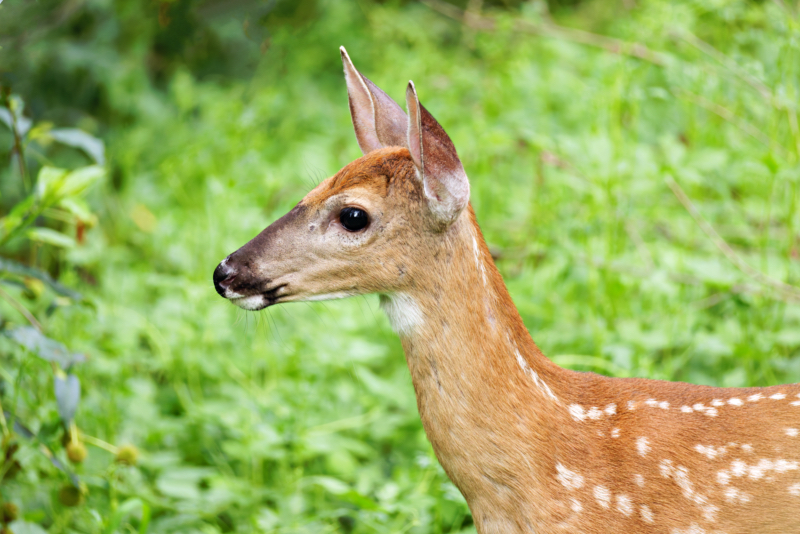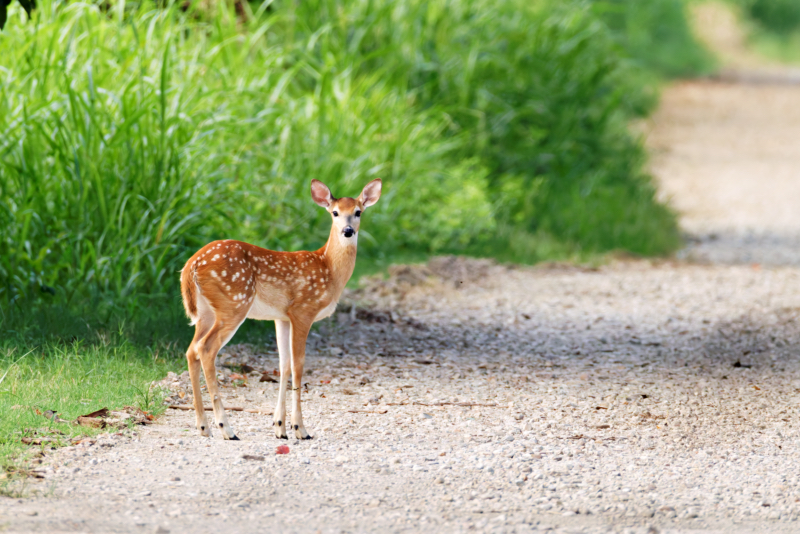As a wildlife enthusiast and photographer, there’s something truly special about capturing the innocence and beauty of nature’s youngest inhabitants. Recently, I’ve had the privilege of observing and photographing White-tailed Deer fawns at the Sequoyah National Wildlife Refuge in Oklahoma.
For weeks, I had been catching glimpses of these delicate creatures from afar, but it wasn’t until July 23rd that I finally had my breakthrough moment. As I was wrapping up a morning of wildlife photography and driving along the auto tour road, I drove upon an area known for its Barred Owl sightings. To my delight, I spotted a fawn accompanied by its doe in a low-lying area beside the road.

Seizing the opportunity, I immediately halted my pickup and began photographing the fawn from inside the vehicle. My friend, a fellow photographer, was able to quietly exit the truck and capture her own shots from my side. It was a moment of pure magic, witnessing this young deer up close in its natural habitat.
Just a few days later, on July 28th, I had another exciting encounter. This time, I spotted a fawn on Moody Road, south of the 4-way intersection on the auto tour road. Interestingly, this location wasn’t far from where I had photographed the first fawn. The proximity of the sightings left me wondering if it could be the same individual. Unlike the previous encounter, this time the fawn was alone, pausing briefly at the roadside before disappearing into the nearby brush.

These sightings came as a relief, as I had been concerned about missing the chance to photograph the fawns before they began to lose their distinctive spots. In Oklahoma, White-tailed deer fawns typically start shedding their spots around early September. These spots, which provide crucial camouflage in the dappled forest light, begin to fade as the fawns grow and become more independent. By the time they reach three to four months of age, most fawns have completely lost their spots, usually becoming spotless by early fall.
Reflecting on these encounters, I’m filled with gratitude for the opportunity to witness and document these beautiful creatures in their early stages of life. The Sequoyah National Wildlife Refuge continues to offer incredible wildlife viewing opportunities, reminding us of the importance of preserving these natural habitats for future generations to enjoy.
For those interested in seeing more perspectives on these enchanting creatures, I encourage you to check out my friend’s blog post, where she shares her own photos and experiences from our shared encounter (White-tailed Deer Fawn In Oklahoma).
As we move into late summer and early fall, I look forward to more wildlife sightings and the chance to observe these fawns as they grow and adapt to their surroundings. Nature never ceases to amaze, and I’m honored to play a small part in documenting its wonders.
Steve Creek
